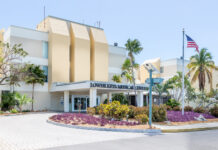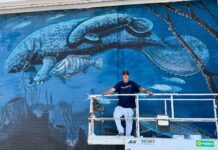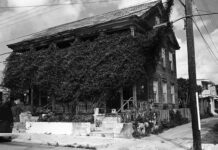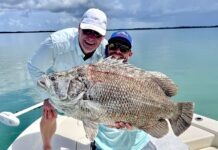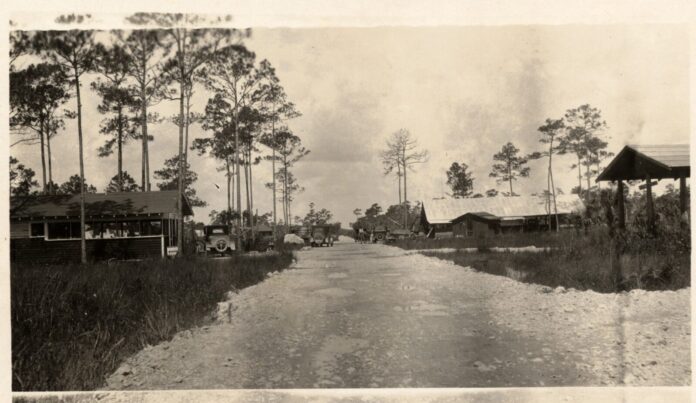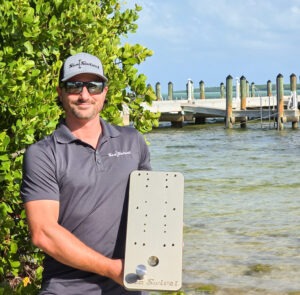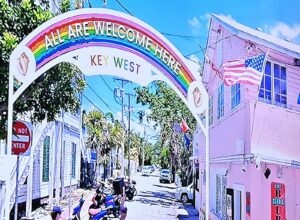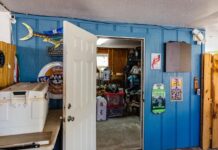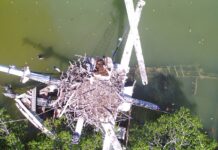It is always interesting to see where a column goes. I start with an idea and then let the history unfold as it needs to.
Often, the story takes a turn I wasn’t expecting, as was the case with this foray onto the mainland. More about that later.
I started this column because Monroe County boasts a substantially larger footprint than just the string of islands connected like pearls on a string by the Overseas Highway. Of the county’s 983 square miles, the Keys account for about 13%. In terms of population, the island chain houses a smidge over 99 percent of it.
In 2020, Monroe County’s population was 82,874. Key West was home to 26,444 of those people — nearly a third. About another third were in Marathon (9,689), Islamorada (7,107), and Key Largo (13,878). The last third lived on the other islands throughout the Upper, Middle and Lower Keys. Fewer than 20 people lived on the mainland of Monroe County, which comprises 87% of its land mass.
The county’s population has always been concentrated in the Keys, even when it was a whole lot bigger than it is today. Monroe was established on July 3, 1823, and predates Florida’s statehood. It was the territory’s sixth county. Initially, it stretched from Key West, the county seat, north to the southern edge of Lake Okeechobee, and west to Charlotte Harbor.
It is easy to understand the winning argument behind the creation of Dade County on Feb. 4, 1836. Legislators agreed it was an undue inconvenience for those living on the mainland to report to Key West for jury duty. A line was drawn from Bahia Honda to the southern shore of Lake Okeechobee. East of the line was Dade County. West of the line remained Monroe County.
The Dade County line stood intact for 30 years. And then, on Dec. 8, 1866, not quite all of the Florida Keys were reestablished as Monroe County. The county line was moved up the island chain from Bahia Honda, past Key Largo and what is today the Ocean Reef community, to where Palo Alto Key, Linderman Key and Rose Key are separated from Swan Key by Broad Creek. The rest of the Northern Keys remained in Dade County and still do.
It was a different story on the west coast, where Monroe County continued to reach for decades until a second county splintered off. On May 2, 1887, Lee County was formed. Fort Myers was named the county seat. Charlotte County and Collier County were carved out of Monroe on May 8, 1923. Three days later, Hendry County was formed on May 11. LaBelle was named the county seat.
Monroe still covers a lot of ground up on the mainland, with county lines reaching surprising places. Driving out of the Keys, the Monroe County line ends, along with the Overseas Highway, near MM 115. On the other side of the county line is Miami-Dade and the South Dixie Highway. Though Monroe ends on the 18-Mile Stretch, it picks back up again out in the Everglades.
Moving west, the islands of Florida Bay remain a part of Monroe, but the Miami-Dade line captures the mainland until about the midpoint of Snake Bight, where Monroe picks up again.
The county line travels in a generally north direction until it meets U.S. 41, where it makes a 90-degree turn west and runs toward the coast in what starts as a straight line, but snakes around the coastline, creeks and islands just below Chokoloskee and Ted Smallwood’s old store.
The big mainland Monroe attraction is Flamingo. Back in the late 1800s, it was home to a small community. The name was chosen in 1893 when a post office was assigned to the community. They decided to name their town after the tall, colorful birds that were once commonplace in South Florida. By 1900, 50 families called the community home. The people who lived there worked as farmers, fishermen and charcoal makers. The fruits of their labor, as well as the charcoal, were shipped to Key West.
The post office was short-lived and closed in 1909. The community lasted a little longer. In 1922, the Ingram Highway, connecting Florida City to Flamingo, opened with the hopes of reviving the outpost community. Instead of opening up Flamingo to new residents, it allowed those who already called the community home an easier access point by which to leave the harsh realities of living in the Everglades.
The isolation did benefit the community during Prohibition when Flamingo was used by bootleggers and those brewing their own alcohol. When plans were made to create a park in the Everglades, those who still called the outpost home were unsure if they would be allowed to remain. They were not. Everglades National Park opened in 1947. The last remaining residents of Flamingo were ordered to leave by June 1, 1951.

Today, the only permanent residents of Flamingo are those working for the park service, the Flamingo Lodge and the Guy Bradley Visitors Center. The lodge is the only hotel accommodation within park boundaries. The lodge, which opened in 1966, closed in 2005 after Hurricanes Katrina and Wilma damaged it. The lodge reopened in 2023 and offers camping and hotel rooms.
Flamingo is not the only former Monroe County outpost up on the mainland. There was also a community called Pinecrest, which, like Flamingo, was home to hunters, fishermen and the Gladesmen who made their living in the Everglades by doing whatever was necessary. It is rumored that the notorious Al Capone had a mansion in Pinecrest, as well as a brothel. However, hurricanes and the Great Depression took their toll on the outpost community. Once found on the old Loop Road, Pinecrest was home to about 200 people who lived without electricity, running water or telephone lines.
Pinecrest’s last big hurrah was a legendary bar called the Gator Hook Saloon. It opened in 1958 and closed in 1977. It was a Gladesmen’s bar and not for the faint of heart or outsiders. The sign out front said no guns or knives. Inside, everyone was packing. There are more stories to tell about mainland Monroe and the Gator Hook, but they will have to wait. Fortunately, it turns out that I know a family member who used to run the Gator Hook, and I’ve already begun picking his brain.
